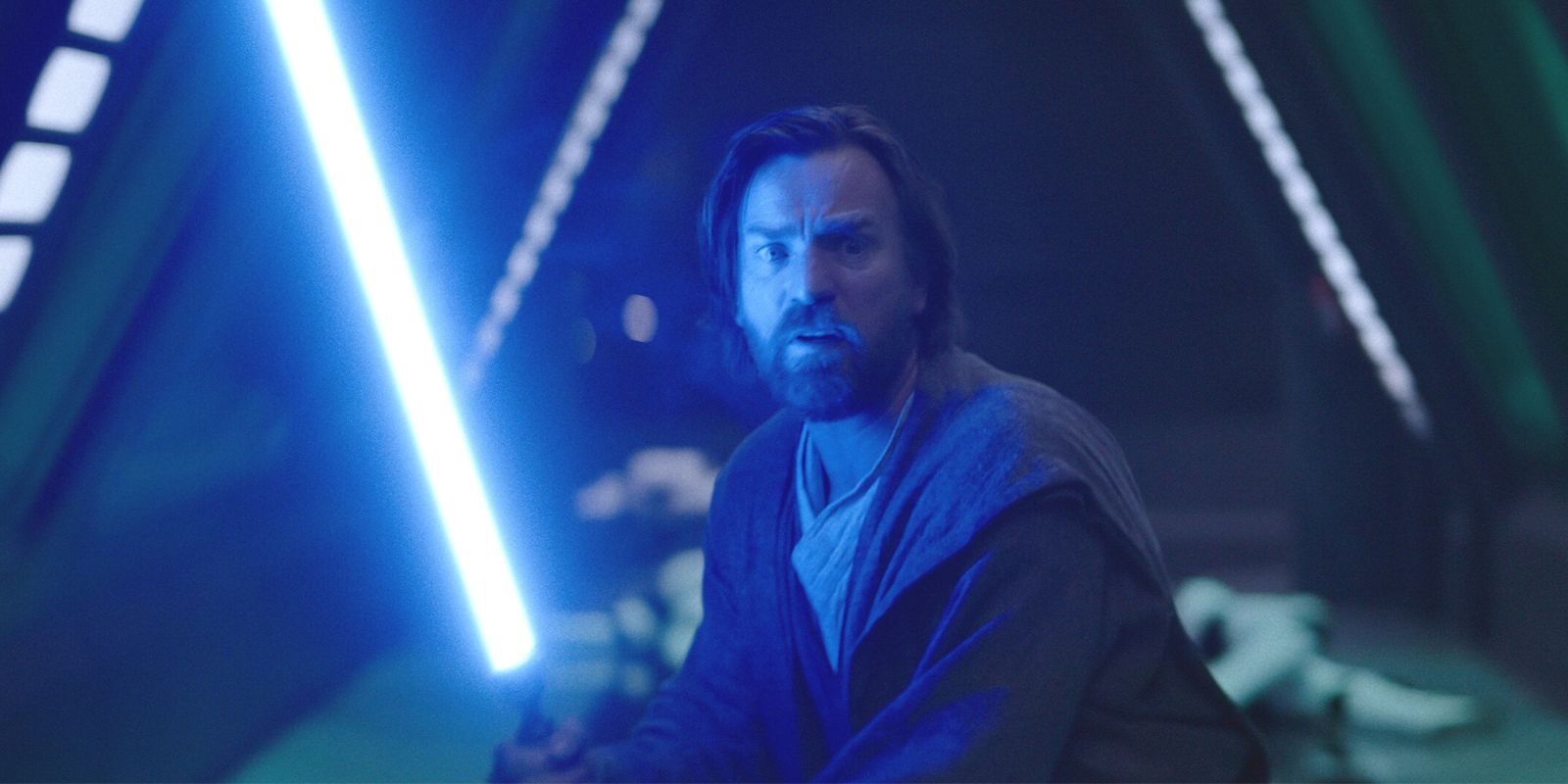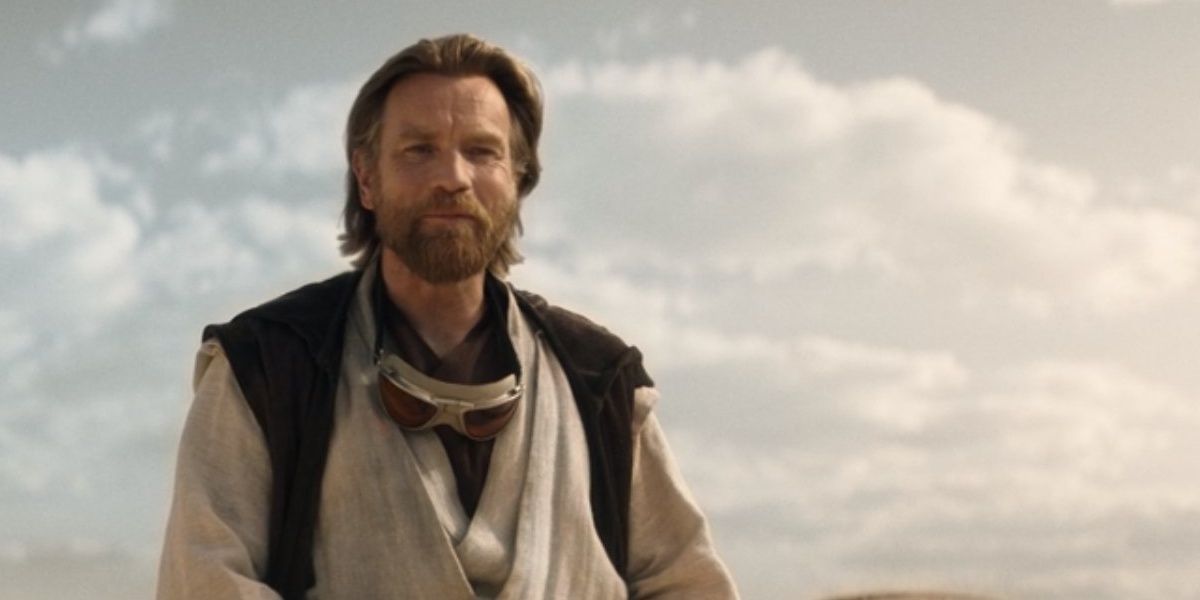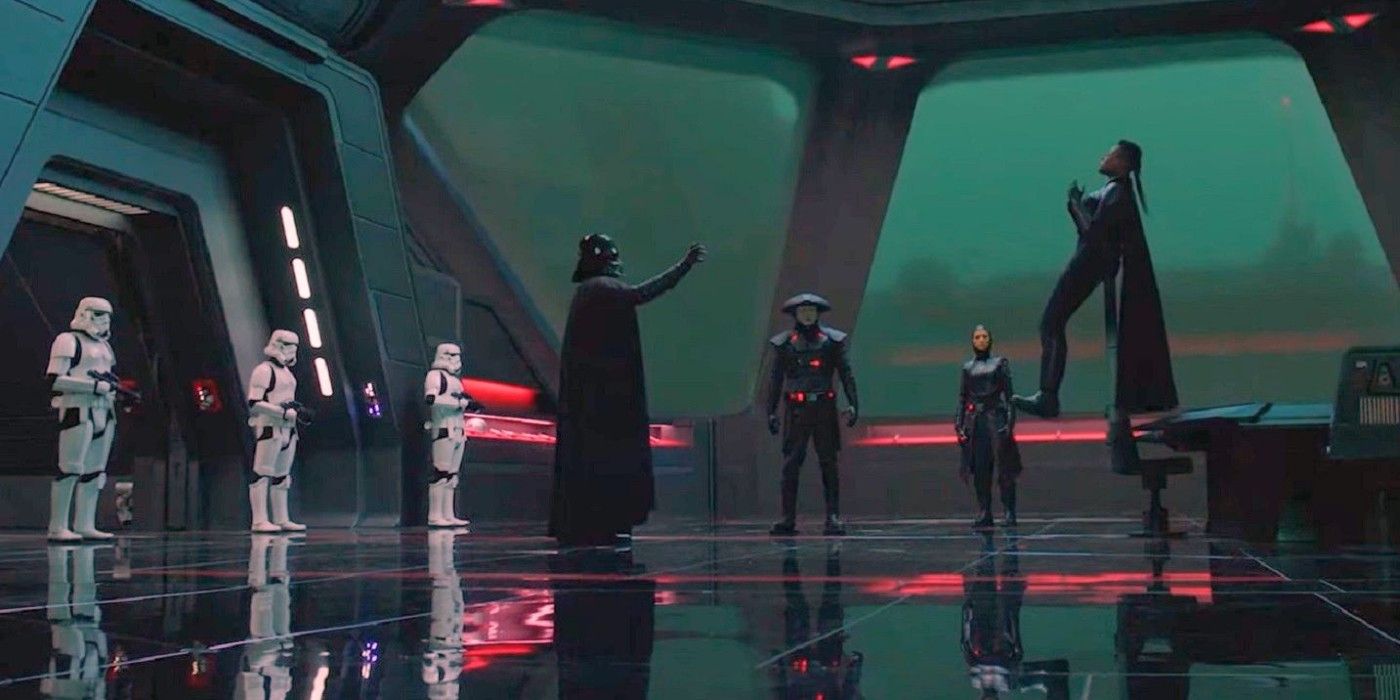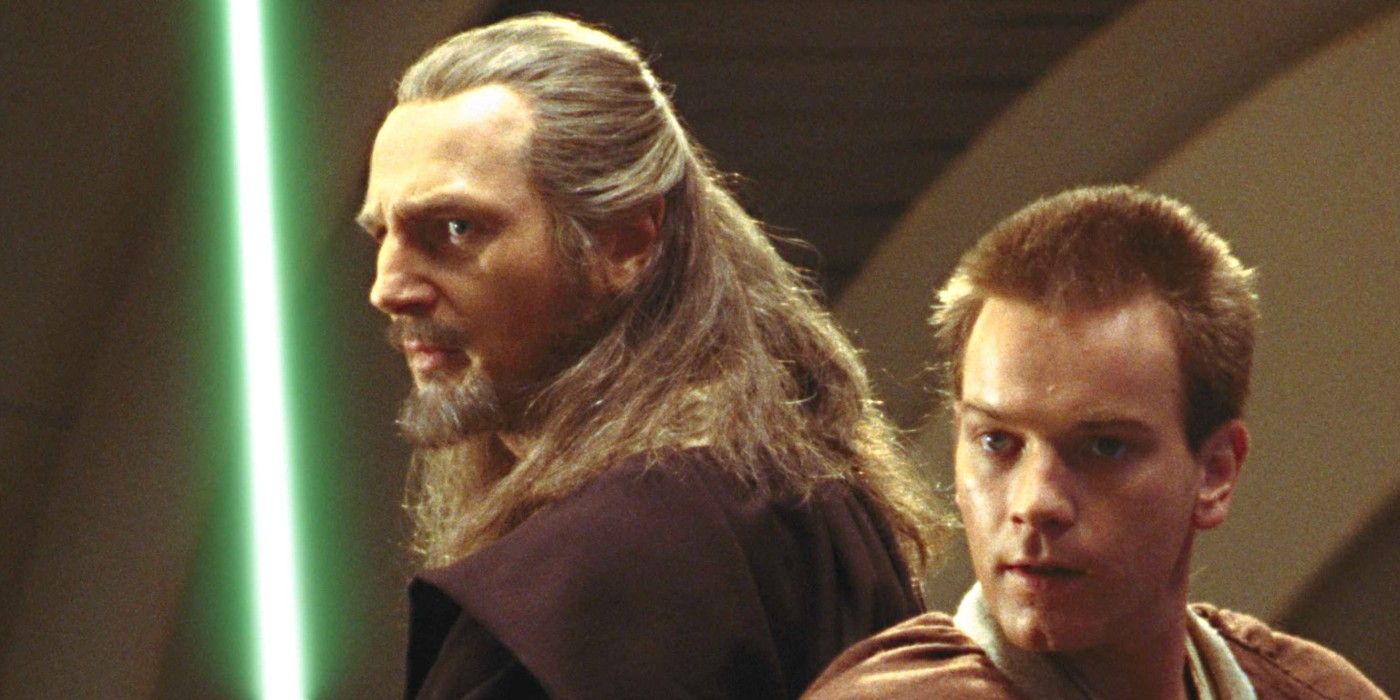The following contains spoilers from Obi-Wan Kenobi Part VI , now streaming on Disney+.
From the first episode of Obi-Wan Kenobi on Disney+, the titular character played by Ewan McGregor was calling out for help. Even before the show debuted, many fans expected to see Liam Neeson reprise his role as Qui-Gon Jinn, probably from the first episode. Whatever one thinks about Obi-Wan Kenobi as a series, it was the right decision to save the appearance of Qui-Gon Jinn until the very end.
When the series was still just a rumor, many Star Wars fans speculated online about seeing the “training” promised in Revenge of the Sith unfold. While some fans wanted to see old Ben fighting criminals on Tattooine or maybe getting involved with the Tusken Raiders, others wanted him to go to Jedi School. In a way, these fans got their wish, just not how they wanted it.
Obi-Wan Kenobi is mainly about taking a broken Ben and making him a Jedi again. As is often the case with a space fantasy about wizards with laser swords, fans often miss the subtext in these stories while looking for something that serves their pre-conceived notions. As Qui-Gon told Obi-Wan in that last scene, he’s been there the whole time. We’ve just not been able to see him.
While no story is ever truly ‘needed,’ Lucasfilm had to ask if Obi-Wan Kenobi was a story that should be told. Would enriching the “dark times” era help or hurt fans’ appreciation for the saga films? One justification in favor of telling this story is the character arc they gave everyone’s first Jedi Master. Obi-Wan Kenobi is a character dealing with the trauma of losing the war, losing his home, losing his brother, and all of his other friends.
Not only does he have to deal with this in the general sense that all Jedi who survived Order 66 do, but he has the added guilt of being the man who didn’t train his apprentice well enough. In the climactic ‘Battle of the Heroes,’ Obi-Wan tells Anakin that he “failed” Obi-Wan. Yet, in Part VI of Obi-Wan Kenobi he asks Anakin for forgiveness.
There is probably no concept in Star Wars more misunderstood than the concept of “balance” in the Force. It’s no one’s fault, of course. There are two sides to the Force—dark and light—and so naturally one would think “balance” means they are on equal footing. If this were the case, then Anakin in Revenge of the Sith would be the most balanced character in history. Yet, in that movie, he’s at his most unbalanced. As George Lucas, and now Dave Filoni, define it, balance is when the light side is stronger, and the dark side is weak. Two Sith Lords take over the Galactic Republic? The Force is dangerously out of balance, but there are two children strong in the light side that create the hope for the future. And so on.
The most balanced figure in the Skywalker Saga (other than maybe Princess Leia Organa) is Qui-Gon Jinn. Rather than worry about politics or the Jedi council, he follows what he calls the “living Force.” He selflessly goes where the Force tells him he is needed. The Obi-Wan we meet in A New Hope is also balanced, patiently waiting for when he could next help the twins bring the light back to the universe. But Ben in Part I of Obi-Wan Kenobi is unbalanced in the Force, and deep in non-magical depression. For his master to even help him, Obi-Wan needed to balance himself. He needed to let go of his fear and guilt—selfish emotions that create a path to the dark side—and embrace patience, empathy, and the willingness to aid those who need him. Only when he reaches this place can he undergo the sort of training that will allow him to turn into the blue-tinted ghost we know he becomes.
If Qui-Gon had been at Obi-Wan’s side the whole time, offering advice and helping out, it might have been fun. Yet, the emotional resonance of Ben’s journey back to being the man we knew him to be would have had less weight. Stakes were difficult enough in this show. We know every character seen in Star Wars: Rebels, Rogue One and A New Hope need to survive. One area that could be mined for tension and drama was whether Qui-Gon would answer him or not. In fact, in the finale in his most desperate moment, Obi-Wan called out to him and was met with silence.
The choice to leave this bit to the end is a good one because it allows Obi-Wan Kenobi to have full agency for his hero’s journey. The displays of power, the expert fighting, and the emotional realizations were all his own. The first part of the training he needed to undergo was to find his way back to balance. He needed to let go of the emotions and regrets holding him down. It’s beautiful, really.
The journey that Obi-Wan and Qui-Gon undertake together is perhaps a piece of Star Wars lore best left to fans’ imagination. Yet, the emotional journey fans wanted from Obi-Wan Kenobi is front-and-center in the narrative.
See Obi-Wan Kenobi become a hero again on Disney+ where all episodes are available.




